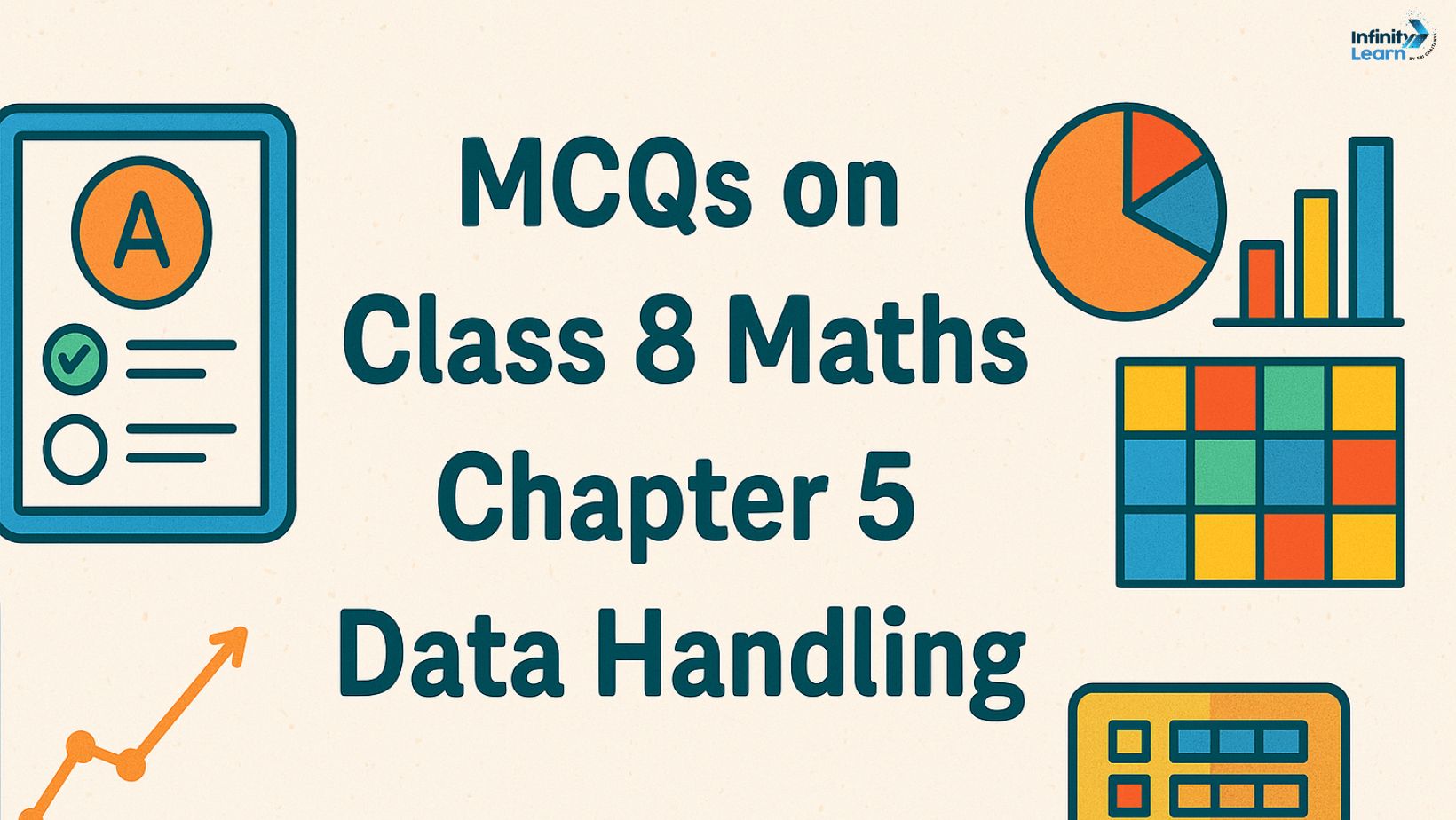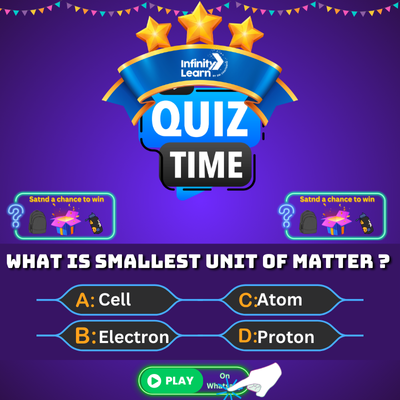Class 8 Maths Chapter 5 – Data Handling MCQs with answers are available online for students. These multiple choice questions are made following the CBSE syllabus 2025-2026 and NCERT guidelines. Chapter-wise MCQs help students understand the concepts better and improve their exam scores. You can also find other important questions for Class 8 Maths here.
MCQs on Class 8 Maths Chapter 5 Data Handling
MCQs for Class 8 Maths Chapter – Data Handling are provided here. Each question has four options, and only one is correct. Students need to solve the question and choose the right answer.
Certainly! Here is a set of 40 Multiple Choice Questions (MCQs) on Class 8 Maths Chapter 5: Data Handling, along with their answers:

1. What is the term for a pictorial representation of data using symbols?
- A) Bar graph
- B) Pictograph
- C) Pie chart
- D) Histogram
Answer: B) Pictograph
Explanation: A pictograph uses symbols or pictures to represent data values.
2. How many sets of data can a double bar graph display simultaneously?
- A) One
- B) Two
- C) Three
- D) Four
Answer: B) Two
Explanation: A double bar graph is used to compare two sets of data across categories.
3. In the class interval 50-60, what is the upper limit?
- A) 50
- B) 55
- C) 60
- D) 65
Answer: C) 60
Explanation: In a class interval, the upper limit is the highest value in that range.
4. What is the class mark of the interval 70-80?
- A) 70
- B) 75
- C) 80
- D) 85
Answer: B) 75
Explanation: Class mark is calculated as the average of the upper and lower limits: (70+80)/2 = 75.
5. What does the height of a rectangle in a histogram represent?
- A) Class interval
- B) Frequency
- C) Cumulative frequency
- D) Range
Answer: B) Frequency
Explanation: In a histogram, the height of each rectangle corresponds to the frequency of the data in that class interval.
6. What is the range of the data set: 15, 22, 8, 19, 31?
- A) 15
- B) 23
- C) 22
- D) 31
Answer: B) 23
Explanation: Range is the difference between the highest and lowest values: 31 – 8 = 23.
7. If a die is rolled, what is the probability of getting a number greater than 4?
- A) 1/6
- B) 1/3
- C) 1/2
- D) 2/3
Answer: B) 1/3
Explanation: Numbers greater than 4 are 5 and 6. Probability = 2/6 = 1/3.
8. What type of graph represents data in a circular format showing proportions?
- A) Bar graph
- B) Histogram
- C) Pie chart
- D) Line graph
Answer: C) Pie chart
Explanation: A pie chart displays data as slices of a circle, representing proportions of the whole.
9. In a frequency distribution, what does the cumulative frequency represent?
- A) Frequency of each class
- B) Total frequency
- C) Sum of frequencies up to a certain class
- D) Average frequency
Answer: C) Sum of frequencies up to a certain class
Explanation: Cumulative frequency is the running total of frequencies up to a specific class interval.
10. What is the median of the data set: 7, 12, 15, 21, 26?
- A) 12
- B) 15
- C) 17
- D) 21
Answer: B) 15
Explanation: The median is the middle value when data is arranged in order. Here, it’s 15.
11. Which measure of central tendency is most affected by extreme values?
- A) Mean
- B) Median
- C) Mode
- D) Range
Answer: A) Mean
Explanation: The mean is sensitive to extreme values, as it considers all data points.
12. What is the mode of the data set: 4, 8, 6, 4, 9, 4, 7?
- A) 4
- B) 6
- C) 7
- D) 9
Answer: A) 4
Explanation: Mode is the value that appears most frequently; here, 4 appears three times.
13. If the mean of five numbers is 18, what is their total sum?
- A) 85
- B) 90
- C) 95
- D) 100
Answer: B) 90
Explanation: Mean = Total sum / Number of items. So, Total sum = Mean × Number of items = 18 × 5 = 90.
14. In a pie chart, if a sector represents 25% of the data, what is its angle?
- A) 45°
- B) 60°
- C) 75°
- D) 90°
Answer: D) 90°
Explanation: 25% of 360° = 0.25 × 360 = 90°.
15. What is the probability of drawing an ace from a standard deck of cards?
- A) 1/13
- B) 1/26
- C) 1/52
- D) 4/52
Answer: A) 1/13
Explanation: There are 4 aces in a deck of 52 cards. Probability = 4/52 = 1/13.
16. Which graphical representation is best for showing trends over time?
- A) Bar graph
- B) Pie chart
- C) Line graph
- D) Histogram
Answer: C) Line graph
Explanation: Line graphs effectively display data trends over periods of time.
17. If the probability of an event occurring is 0.7, what is the probability of it not occurring?
- A) 0.3
- B) 0.5
- C) 0.7
- D) 1.0
Answer: A) 0.3
Explanation: Probability of
18. What is the total angle of a pie chart?
- A) 90°
- B) 180°
- C) 270°
- D) 360°
Answer: D) 360°
Explanation: A pie chart is a full circle, so it measures 360 degrees.
19. Which of these is NOT a type of data presentation?
- A) Bar graph
- B) Table
- C) Poem
- D) Pictograph
Answer: C) Poem
Explanation: Poems are not used for data presentation.
20. If frequency of 30 students scoring between 40-50 marks is 12, what does it mean?
- A) 12 students got above 50
- B) 12 students got below 40
- C) 12 students got between 40-50
- D) All students scored above 60
Answer: C) 12 students got between 40-50
21. If mean of 10 numbers is 25, find the total sum.
- A) 250
- B) 225
- C) 275
- D) 200
Answer: A) 250
Explanation: Mean × Number of terms = 25 × 10 = 250
22. The difference between the highest and lowest value is called?
- A) Mean
- B) Range
- C) Mode
- D) Median
Answer: B) Range
23. Which graph is ideal for showing parts of a whole?
- A) Line graph
- B) Histogram
- C) Pie chart
- D) Dot graph
Answer: C) Pie chart
24. Which of the following is a random experiment?
- A) Throwing a ball
- B) Tossing a coin
- C) Reading a book
- D) Climbing stairs
Answer: B) Tossing a coin
25. What is the probability of an impossible event?
- A) 1
- B) 0
- C) 1/2
- D) Any value
Answer: B) 0
Explanation: An impossible event has zero probability.
26. A bar graph uses which type of bars?
- A) Curved
- B) Wavy
- C) Straight and equal width
- D) Zig-zag
Answer: C) Straight and equal width
27. In a histogram, class intervals are represented on which axis?
- A) X-axis
- B) Y-axis
- C) Diagonal
- D) None
Answer: A) X-axis
28. The number that occurs most in a dataset is called?
- A) Mean
- B) Mode
- C) Range
- D) Median
Answer: B) Mode
29. A coin is tossed. What is the probability of getting heads or tails?
- A) 1
- B) 2
- C) 0.5
- D) 0
Answer: A) 1
Explanation: Either head or tail must appear, so probability = 1.
30. What is the median of: 2, 6, 8, 9, 10?
- A) 6
- B) 8
- C) 7
- D) 9
Answer: B) 8
31. Which of these is NOT a measure of central tendency?
- A) Mean
- B) Median
- C) Mode
- D) Frequency
Answer: D) Frequency
32. The total number of outcomes when a die is rolled once is:
- A) 2
- B) 4
- C) 6
- D) 8
Answer: C) 6
33. Which chart shows data using rectangular bars of equal width?
- A) Pie chart
- B) Histogram
- C) Bar graph
- D) Line chart
Answer: C) Bar graph
34. If you pick a card at random from 1 to 10, what’s the probability of even number?
- A) 1/2
- B) 1/3
- C) 3/10
- D) 2/5
Answer: A) 1/2
35. Which of the following is always a whole number?
- A) Mean
- B) Mode
- C) Median
- D) None
Answer: D) None
Explanation: Mean, median or mode can be decimals or fractions.
36. How many outcomes are there when two coins are tossed?
- A) 2
- B) 3
- C) 4
- D) 5
Answer: C) 4
Explanation: HH, HT, TH, TT
37. Which type of data can be collected using tally marks?
- A) Temperature
- B) Quantity
- C) Categorical data
- D) Frequency
Answer: D) Frequency
38. What is the class size of interval 10-20?
- A) 10
- B) 20
- C) 30
- D) 5
Answer: A) 10
39. When a coin is tossed twice, the probability of getting 2 heads is:
- A) 1/2
- B) 1/3
- C) 1/4
- D) 1/6
Answer: C) 1/4
40. Which value divides the data into two equal parts?
- A) Mean
- B) Mode
- C) Median
- D) Frequency
Answer: C) Median




